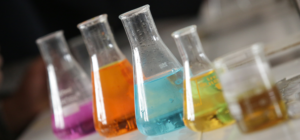 The majority of gemstones mined for commercial jewelry are subjected to some kind of treatment in addition to cutting and polishing before they reach the consumer. Sellers will frequently describe treated gems as enhanced, a title that acts as a catch-all for a variety of methods in use. This indicates that the gemstone is natural, but its appearance has been altered. Most gemstones are routinely heated to improve their color and clarity, while others undergo such immense alteration that they do not even resemble their natural state. Learn which types of gem treatments are considered acceptable, which are controversial, as well as which gem treatments are permanent and which are not.
The majority of gemstones mined for commercial jewelry are subjected to some kind of treatment in addition to cutting and polishing before they reach the consumer. Sellers will frequently describe treated gems as enhanced, a title that acts as a catch-all for a variety of methods in use. This indicates that the gemstone is natural, but its appearance has been altered. Most gemstones are routinely heated to improve their color and clarity, while others undergo such immense alteration that they do not even resemble their natural state. Learn which types of gem treatments are considered acceptable, which are controversial, as well as which gem treatments are permanent and which are not.
what are Common Gemstone Treatments?
Here you will find a list of common gemstone enhancements and how they improve the appearance of a gemstone.
- Heat treatment: Heat treatment of gemstones is so common that you can assume most gems you will see have been subjected to it. Exposure to high temperatures can greatly improve color and/or clarity in sapphire, ruby, amethyst, citrine, and aquamarine to name a few. Since many gem experts agree that heat exposure is congruent with the forces of nature that form gemstones, this method is considered acceptable. Some heat treatments are gentle; gems are placed in coal fired kilns and show dramatic improvement in color. Other heat treatments can be as high as 1600 degrees centigrade, almost to the melting point of the stone; rutile inclusions dissolve. Heat treatment becomes controversial when other elements are introduced into the gemstone during the process.
- Diffusion: Diffusion treatment occurs at the high temperatures mentioned above, but before gems can crystallize, elements are introduced that will greatly alter the gemstones appearance. The addition of beryllium, it was discovered, could transform colorless, practically worthless stones into desirable gem quality stones. Diffusion can be controversial because early methods produced only surface color improvement, which could be removed if a gemstone needed to be re-cut or polished.
- Oiling: A common treatment for emeralds which typically have numerous surface reaching inclusions. Viscous oils such as cedar can penetrate fissures in gemstones and make them far less noticeable. The oil will have a similar refractive index as the gemstone, allowing less interference in light play and a big improvement in clarity. Oiled stones need special care to avoid cleaning or removing the oil.
- Filling: Filling is considered a controversial treatment because it is used to conceal flaws. Typically used in rubies that would otherwise not be suitable for sale, glass is introduced during the heating process. With a similar refractive index, the glass “heals” the fractured stones making severe flaws undetectable to the untrained eye.
- Irradiation: Gemstones are bombarded with subatomic particles. The result is radical changes in color. Colorless topaz is subjected to this treatment to achieve the electric blue hue favored in the marketplace. Concern about residual radiation has led to the practice of delaying distribution of irradiated stones.
- Dyeing: Turquoise, pearls, and black onyx are two types of gems that are frequently dyed. Dyeing gems can make their color more even as well as more vibrant.
Are Gemstone Treatments Permanent?
The short answer is it depends on the treatment and the type of stone. Heat treatment is considered permanent. Oiled stones should be handled carefully, avoiding contact with commercial jewelry cleaning techniques such as ultrasonic or solvent cleaning. Diffusion can be permanent if the treating has permeated the entire stone, not just the surface where it can potentially scratch or become polished off. Like all gem enhancements, filling should be disclosed t o the buyer because it has permanently introduced other substances not inherent to the gemstone and changed its composition. Irradiation of gemstones is a permanent treatment and is regulated in the United States, but not in other countries. Dyeing is permanent, but care should be taken to protect dyed stones from prolonged exposure to sunlight.
o the buyer because it has permanently introduced other substances not inherent to the gemstone and changed its composition. Irradiation of gemstones is a permanent treatment and is regulated in the United States, but not in other countries. Dyeing is permanent, but care should be taken to protect dyed stones from prolonged exposure to sunlight.
What You Should Know About Synthetic Gems
Synthetic gems have the same chemical composition as natural gems, but with one important distinction. Natural gems are mined from the earth where intense heat and pressure cause the crystallization of minerals. Synthetic gems are created in a laboratory and are entirely man made. Some companies in the synthetic gemstone industry feel the name “synthetic” is a misnomer; that is, it does not accurately describe their product. The preferred marketing term is “created.” When you buy a “created” gem, this is the seller’s way of letting you know it was created in a lab, and not mined from the earth.
What Are Gemstone Simulants?
Gemstone simulants are not gemstones at all. They are an entirely different substance that merely bears a resemblance to a gemstone. A “simulated sapphire” has nothing to do with corundum, and most likely is just blue glass. Simulated gemstones should not be equated with natural or synthetic gemstones in price or desirability.
Did you buy a gemstone knowing that it had been enhanced? How was this information communicated to you? Does knowing that most gemstones are enhanced change the way you perceive them? Tell us your opinion on gemstone enhancements now.
Read more about how to distinguish between simulants, created and natural gemstones or other posts from the Introduction to Gemstones series.
